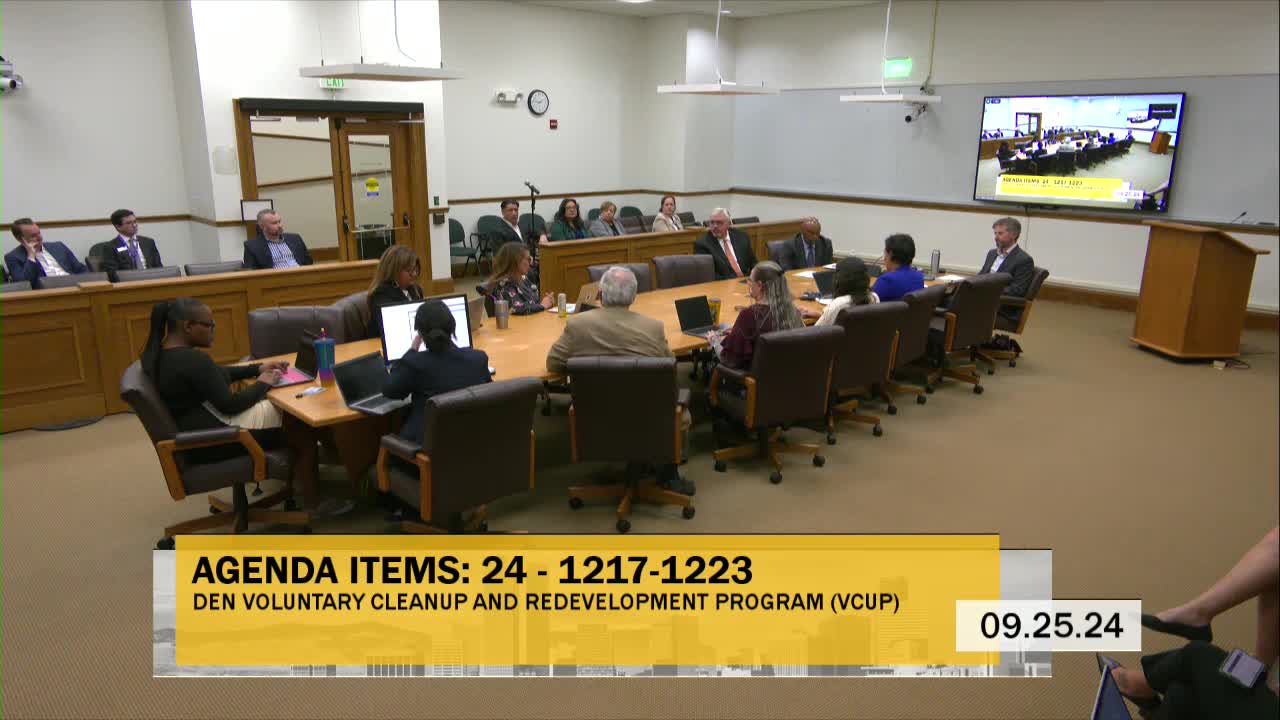Denver Airport Takes Bold Steps to Combat PFAS Contamination
September 25, 2024 | Denver (Consolidated County and City), Colorado
This article was created by AI summarizing key points discussed. AI makes mistakes, so for full details and context, please refer to the video of the full meeting. Please report any errors so we can fix them. Report an error »

In a recent government meeting, significant discussions centered around the environmental and health impacts of PFAS (per- and polyfluoroalkyl substances) chemicals, particularly concerning their use in firefighting. Council President highlighted the carcinogenic nature of PFAS, emphasizing the need for protective measures for firefighters who are exposed to these harmful substances.
The meeting featured a detailed overview of the application process for the V Cup program, which aims to address PFAS contamination in soil, groundwater, and surface water. The application, described as extensive, outlines a framework for remediation efforts and involves collaboration with state authorities to ensure thorough oversight and effectiveness.
Key locations identified for potential PFAS contamination include fire stations and airport runways, where firefighting foams have historically been used. The program's site characterization phase is expected to further pinpoint the geographical extent and concentration of PFAS at these sites.
Additionally, discussions touched on the broader context of PFAS remediation efforts at the federal level. The FAA reauthorization bill has initiated several programs aimed at supporting airports in transitioning to PFAS-free alternatives and addressing long-term remediation needs. However, the need for adequate funding for these initiatives was underscored, as the costs associated with remediation can be substantial.
The council members expressed appreciation for proactive measures being taken by the Denver Fire Department and airport authorities, recognizing the importance of prioritizing public health and environmental safety. The commitment of over $20 million from the Denver International Airport's capital improvement program was noted as a significant step towards addressing these issues without waiting for federal assistance.
Overall, the meeting highlighted a growing awareness and proactive stance on PFAS contamination, with local leaders advocating for the health of first responders and the environment as a top priority.
The meeting featured a detailed overview of the application process for the V Cup program, which aims to address PFAS contamination in soil, groundwater, and surface water. The application, described as extensive, outlines a framework for remediation efforts and involves collaboration with state authorities to ensure thorough oversight and effectiveness.
Key locations identified for potential PFAS contamination include fire stations and airport runways, where firefighting foams have historically been used. The program's site characterization phase is expected to further pinpoint the geographical extent and concentration of PFAS at these sites.
Additionally, discussions touched on the broader context of PFAS remediation efforts at the federal level. The FAA reauthorization bill has initiated several programs aimed at supporting airports in transitioning to PFAS-free alternatives and addressing long-term remediation needs. However, the need for adequate funding for these initiatives was underscored, as the costs associated with remediation can be substantial.
The council members expressed appreciation for proactive measures being taken by the Denver Fire Department and airport authorities, recognizing the importance of prioritizing public health and environmental safety. The commitment of over $20 million from the Denver International Airport's capital improvement program was noted as a significant step towards addressing these issues without waiting for federal assistance.
Overall, the meeting highlighted a growing awareness and proactive stance on PFAS contamination, with local leaders advocating for the health of first responders and the environment as a top priority.
View full meeting
This article is based on a recent meeting—watch the full video and explore the complete transcript for deeper insights into the discussion.
View full meeting
